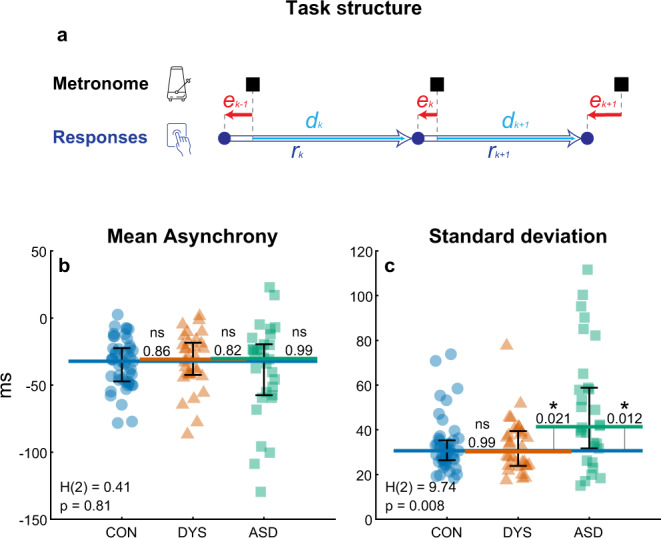Fig. 1. Isochronous finger tapping: mean asynchrony is similar in the three groups, but variability around this mean is substantially larger in Autism (ASD) compared to neurotypical (CON, control) and dyslexia groups (DYS).

a A schematic illustration of the temporal structure of paced tapping: metronome stimuli (presented every 500 ms, black squares), and finger-tap responses (blue circles) as a function of time; - error (asynchrony, typically negative) in tap k; - inter-tap interval; - delay interval from the previous metronome stimulus (beat k-1) to the following finger tap (tap k). Note that . b, c Basic tapping parameters: b Mean asynchrony is negative for all three groups (p < 0.001) and similar in the three populations, though more broadly distributed in the ASD group. c Standard deviation is larger in the ASD group compared to the two other groups. Each dot represents the performance of one participant (average of two blocks); the y-axis represents the score in ms, and x-axis and color represent group membership (with a small jitter for readability): blue circles—neurotypical, red triangles—dyslexia, and green squares—ASD. The median of each group is denoted as a line of the same color; error bars around this median denote an interquartile range. Kruskal–Wallis H-statistic and corresponding p values are plotted in the bottom-left corner; p values of comparisons between groups are plotted next to the line connecting the groups’ medians. N = 109 subjects (NCON = 47, NDYS = 32, NASD = 30). Source data are provided as a Source Data file. Though there are a few outlier results in both mean asynchrony and standard deviation of participants with ASD, these are not the same individuals—scores on these two measures were not correlated in the ASD and dyslexia groups (Spearman correlations: (p = 0.3), (p = 0.18)). A significant correlation was found only in the neurotypical group (, p = 0.01, uncorrected). Statistical tests are two-sided unless stated otherwise.
